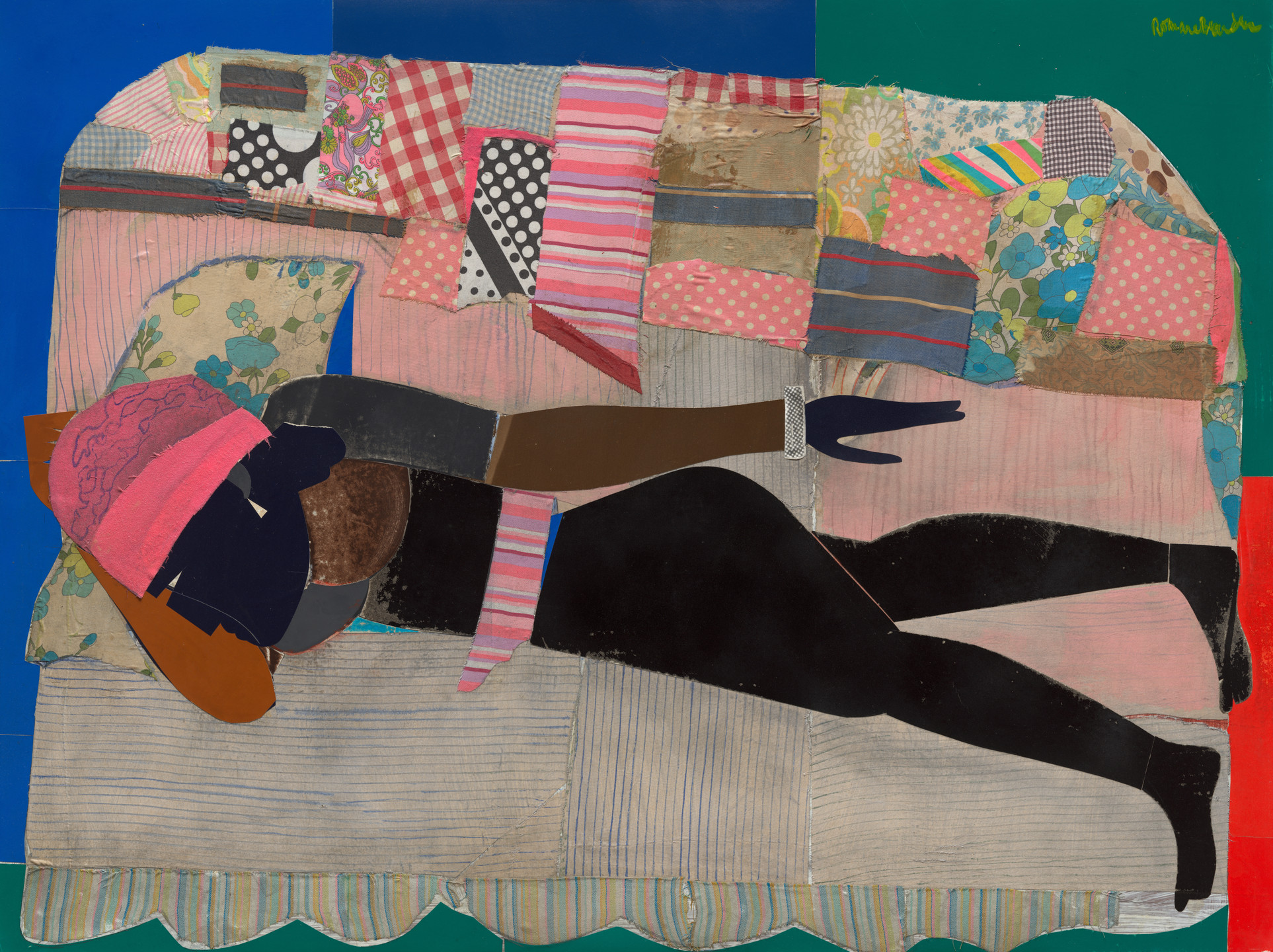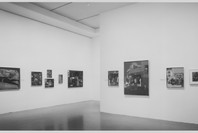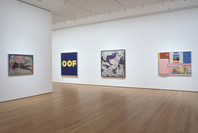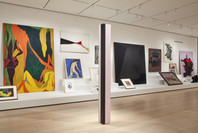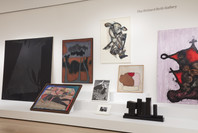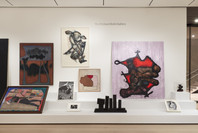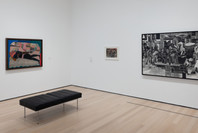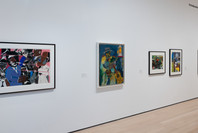In 1964, after three decades of living and working in Harlem, Bearden took up collage, cutting and combining found images and photographs to achieve new combinations defined by their fragmentation, texture, and layered depth. He used this approach to capture the complex facets of Black experience in the United States, often depicting scenes from everyday life in the rural South, which many African Americans left to move to northern cities during the Great Migration (1916–70), and scenes from Harlem. Throughout his career, Bearden reworked his own images in different mediums, including this collage, which is shown alongside a later photo reproduction.
Gallery label from 2022
"I try to show," Bearden said, "that when some things are taken out of the usual context and put in the new, they are given an entirely new character." A strategy of fragmentation and recombination informs Bearden's approach to art-making. The reclining figure at the center of the work resembles those of Egyptian tomb reliefs and its flattened pictorial space recalls Cubist painting. The background is made from collaged fabric that the artist has assembled into a patchwork quilt, invoking a distinctive African American domestic tradition.
Gallery label from 2011
"I try to show," Bearden once said, "that when some things are taken out of the usual context and put in the new, they are given an entirely new character." And a patchwork quilt, no matter how rich its pattern, is always made out of remnants cut from their context—out of scraps of outworn cloth, now put to a new use, and acquiring a nobler quality. Whether faded or frayed, their role in a new design refreshes their meaning and beauty.
Bearden's Patchwork Quilt, made up, in part, of exactly such fragments of cloth, has a share in this kind of ennoblement. A student of many cultures, Bearden took Egyptian tomb reliefs as his inspiration for the figure, with its graceful lines, its distinctive left arm and hand, its sideways posture, and its legs parted as if in midstride. Another influence was the centuries-old sculpture of Benin. These bases in high, specifically African aesthetics claim a regal ancestry for Bearden's lounging African American woman. In fact, his work lives in its cosmopolitan and democratic fusions—of the distinguished heritage of painting and the domestic practice of quilting (in which there is a distinct African American tradition), of analytic art (in the echoes of Cubism) and household decoration, and of everyday leisure and utter elegance.
Publication excerpt from The Museum of Modern Art, MoMA Highlights, New York: The Museum of Modern Art, revised 2004, originally published 1999, p. 276.
